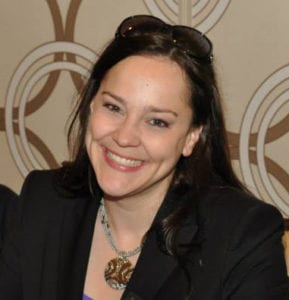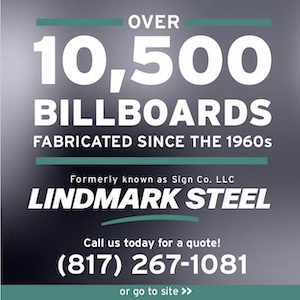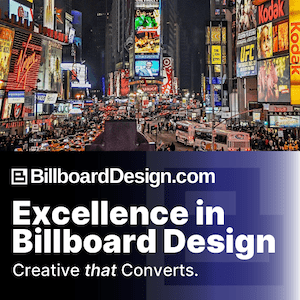
 By Nicole Randall OAAA Communications Senior Director
By Nicole Randall OAAA Communications Senior Director
OAAA regularly features Thought Leadership Q&A from its committee members.
This month, OAAA spotlights the Innovations Committee, asking members:
“The OOH industry is rapidly evolving as innovative technologies are introduced and deployed. How would you describe today’s dynamic OOH medium to a non-techie?”
 Kevin Bartanian, Kevani
Kevin Bartanian, Kevani
Your pitch must be shorter, faster, better. Business owners and marketing professionals are interested in accelerating revenue, maximizing profits, and building marketing platforms with tolerable client acquisition costs.
The dynamic OOH medium does all of that, but it is useless when the pitch is flawed. Pitch the results of your service and show competitive examples to potential clients and you will gain interest that translates to long-term contracts; offer nothing but technical details and you will end up confusing and alienating potential partners.
 Lawrence Chan, Cuebiq
Lawrence Chan, Cuebiq
From a more macro perspective, technology today is finally allowing companies to understand the non-digital footprint of consumers. In respect to OOH, it’s now possible to put more relevant ads in front of many who are likely going to be more receptive to its message. The past of hoping and praying can now be replaced with a more methodical and data-driven approach.
Moreover, actually understanding the effectiveness of those ads to spurn action has become possible. It’s still early to understand what methodologies will be accepted, but the underpinnings of its future possibilities will help drive OOH into the overall marketing plan for key performance indicators. It’ll no longer sit as a separate, unverifiable, and static medium.

Ian Dallimore, Lamar Advertising Company
I remember pitching dynamic content years ago, and every meeting I was in I was convinced I was speaking another language! Over the past two years I’ve seen more dynamic campaigns emerging. One of the major things I’ve learned is to keep the conversation about technology and OOH very simple and use LOTS of images. We build out what we call “Dynamic Anatomy” of a campaign that is using data to trigger creative content. This helps not only explain to buyers/planners but also helps the brands they represent.
I often describe what digital OOH is capable of to non-techies or my mom like this: “Digital OOH has the ability to change creative in real time based on any condition using data. If ‘x’ occurs, then play ‘y’ creative.”
As far as our ability to measure and serve mobile advertising, it goes a little something like this: “When your cell phone drives past your brand’s OOH creative, we then serve that device a mobile ad when they go to a specific location.”
 Mike Galkin, Branded Cities
Mike Galkin, Branded Cities
With connected digital OOH, we now have the ability to deliver the right messaging to the right audience at the right time. Dynamic digital content, which can be based on triggers such as weather, traffic, more or less anything you can think of, can give the proper context to a brand’s messaging.
Jonathan Gudai, Adomni
 Today, the ability to engage with consumers lives in hundreds of different media channels. Research has shown that US consumers are bombarded by 5,000 marketing messages. In this cluttered landscape, OOH advertising stands apart – from its massive scale in physical terms (size of large screens and number of advertising panels) to the huge audiences it reaches. And most importantly, it is the context of WHEN the audience is reached that makes it effective; when they are on the move and likely not glued to their mobile device or subject to the many other in-home diversions.
Today, the ability to engage with consumers lives in hundreds of different media channels. Research has shown that US consumers are bombarded by 5,000 marketing messages. In this cluttered landscape, OOH advertising stands apart – from its massive scale in physical terms (size of large screens and number of advertising panels) to the huge audiences it reaches. And most importantly, it is the context of WHEN the audience is reached that makes it effective; when they are on the move and likely not glued to their mobile device or subject to the many other in-home diversions.
Digital OOH screens in particular offer several dynamic capabilities for advertisers. Two examples are the ability to have multiple creative messages split the share-of-voice and the ability for an advertiser to rapidly change creative messaging in near real-time. As advertisers continuously look for better ways to cut through the advertising clutter, OOH is increasingly being selected because there is zero risk of bots clicking on your ads, no ad blockers preventing your ad from being seen, and no chance that you would pay for an ad on a screen when it is practically un-viewable. OOH is also increasingly being bought and sold online, making it as convenient to purchase and measure as other advertising channels. It is these reasons and others that help explain why digital OOH advertising is the second fastest growing ad medium.
 Jeff Gunderman, EYE Corp Media
Jeff Gunderman, EYE Corp Media
Just as digital cameras revolutionized photography almost overnight after 100+ years of using film and paper, innovative technologies are rapidly changing and enhancing the OOH advertising industry. Manual processes of printing and posting ads have been replaced in many locations with digital screens connected through the internet to ad servers. The technology advancements have enabled real-time ad serving, customization, and personalization never before possible.
Ad relevancy is enhanced through triggers like audience, location, and weather. Attribution is now possible through the use of mobile phone signals and audience detection, helping understand the audiences exposed to the ad and the actions of those audiences post ad exposure. We are in the early stages of this technology shift, but the impact is already substantial, and the future opportunity is huge.
 Stephanie Gutnik, BroadSign
Stephanie Gutnik, BroadSign
My preferred way to start a discussion about OOH assumes that everyone is a “non-techie,” regardless of the channel or industry they work in. By focusing on the relevant and memorable OOH campaigns people experience daily, they can more meaningfully understand its impact.
Highlighting a QSR’s weather-triggered messaging on a digital billboard or a retailer’s audience-based ads in a shopping mall will demonstrate how the medium is used in a contextual and effective way. Taking it one step further, even the biggest of Luddites (myself included!) will appreciate the option of receiving a mobile coupon from the retailer’s mall ad that can be conveniently redeemed where the viewer is already located.
 Alex Kim, Blue Bite
Alex Kim, Blue Bite
OOH is a media category that’s been slept on for generations in the public eye but has been fueling the ad business since the very beginning. It’s a medium that everyone with a beating heart has experienced in some shape or form; whether or not you are conscious of it is a separate topic. OOH represents a declaration or rather an invitation to learn more about a product or service. On the exterior, it’s a platform meant to pique your interest, tell a quick story, or point you in the right direction throughout your day.
In the past decade or so, with advances in display hardware, web, and networking protocols, OOH has been going through an evolution of becoming a passive medium to becoming an elegant, present (woke AF, as they say), and participatory one. It’s an ongoing experiment with LOTS of learnings to be applied.
Today, I believe we’re at a cusp, where OOH has fully come to terms with itself and doesn’t try to be an extension of digital media. We now know “more ads” is not better, rather “more helpful ads” is the new table-stakes to compete with other digital media. Signs are now intelligent, informed, and contributing to your daily considerations rather than its former self as a rotating slideshow. Fun times ahead.
 Mike Norton, Norton Outdoor
Mike Norton, Norton Outdoor
One way to explain the dynamic capabilities of today’s OOH medium might be to break it down into different types of capabilities. It can also be instructive to compare these capabilities to previous capabilities, as many people with whom we interact, including some marketers, but also zoning administrators and legislators, often have a very outdated perspective about what our industry is. Examples include:
Digital displays –Digital OOH provides its users the ability to change copy and messaging at a moment’s notice, and these changes can be automatically triggered, such as showing one piece of creative on a warm, sunny day, and a completely different creative on a cold, snowy day. It used to take weeks to get creative changed. Now copy is changed with a few key strokes and clicks.
Combinations with digital advertising platforms – More OOH providers are integrating offerings with digital, either by providing digital ad campaigns in addition to OOH campaigns or through the use of other technologies, such as beacons, to “push” notifications to mobile devices. By the way, OOH increases digital engagement by up to 300%.
Measurement – The ability to tap into data from wireless carriers allows us a better understanding of who is seeing our displays, how they got there, where they went after seeing an OOH ad, and even includes purchase behavior. This ability will put OOH on level footing with digital, which has been arguably over-valued due to the audience delivery metrics.
Buying and Selling of OOH – Our industry is moving in the direction of programmatic buying. Basically, it is a real-time, automated bidding process that allows buyers and sellers to make a transaction based on pre-set parameters, including targeting needs (geographic, demographic, timing, etc.) and pricing. If your bid matches an available spot, it will run. This can bring many more advertisers into the OOH arena, as it eliminates the need to directly interact with a salesperson for each OOH display available for purchase.
 Ben Putland, Grand Visual
Ben Putland, Grand Visual
In its most basic form, the digitization of OOH has enabled the use of full-motion creative, which delivers cut-through, attracts more eyes, and holds attention for longer than its static counterpart. But, as the technology and infrastructure grow ever more sophisticated, the efficiencies this delivers have fundamentally changed the way the medium is planned, booked, and used. Now it is simple to produce, centrally manage, and deliver campaigns from a single dashboard to multiple media owners and markets around the world.
We are already seeing it, brands and their agencies delivering tactical OOH creative on a bigger scale and a more frequent basis. This shift, away from traditional OOH planning, is giving way to a more agile campaign concept, where ideas are fueled by data and evolve based on location, time of day, weather, and other relevant data sets.
This shift sees OOH increasingly aligning with online and mobile digital media as the medium takes a more active role in a brand’s overall digital strategy. Whilst digital OOH remains a medium that works best at the top of the funnel, this longer term “always-on” commitment that leading brands are taking to their DOOH strategies means that the medium continues to deliver brand fame, while staying fresh, relevant, and useful with creative that incorporates data to contextualize messaging on the go.
[wpforms id=”9787″]
Paid Advertisement

















